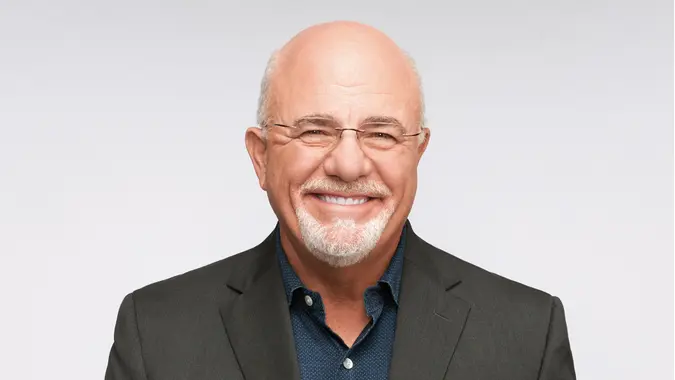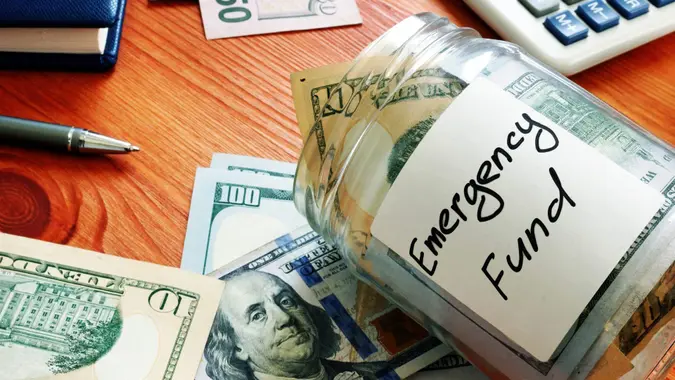Boomers Have the Biggest Emergency Funds of Any Generation: See How Much They’ve Saved

Commitment to Our Readers
GOBankingRates' editorial team is committed to bringing you unbiased reviews and information. We use data-driven methodologies to evaluate financial products and services - our reviews and ratings are not influenced by advertisers. You can read more about our editorial guidelines and our products and services review methodology.

20 Years
Helping You Live Richer

Reviewed
by Experts

Trusted by
Millions of Readers
For most Americans, building up emergency savings is a top financial priority — 64% said it’s their focus right now, according to a recent Empower survey. But when it comes to how much people have actually saved, the numbers vary widely by generation.
The median emergency savings balance for Americans overall is just $500 — but baby boomers are far ahead of the curve. Here’s a look at how much baby boomers have in their emergency funds, and whether their higher savings balances are even enough.
How Much Boomers Have Stashed for an Emergency
According to Empower, baby boomers have a median emergency fund of $2,000 — over six times more than millennials and five times more than Gen Z.
Here’s how the median emergency fund balances of the different generations compare:
- Boomers: $2,000
- Gen X: $500
- Millennials: $300
- Gen Z: $400
Why Boomers Are Ahead in Emergency Fund Balances
“Boomers generally have had a longer time horizon to contribute to their safety net — multiple decades’ worth of savings compared to less time for their younger counterparts,” said Keith Jones, senior financial professional with Empower.
This boost has been compounded for boomers who have their emergency funds in high-yield savings accounts, which tend to see higher interest rates than average savings accounts: “They’ve been able to earn additional money on their savings for a longer period of time,” Jones said.
Additionally, boomers may simply need more cash on hand than younger generations.
“A true emergency fund is generally based on monthly expenses or income, with three to six months’ worth of spending as a good rule of thumb,” Jones said. “With boomers being older, there is a good chance that their expenses and income are higher than those of younger generations, thus needing a larger emergency fund.”
Meanwhile, younger generations face financial headwinds that make saving more difficult.
“Another study by Empower found that Gen Z and millennials have higher student loan burdens, at an average of $526 and $215 a month, respectively,” Jones said. “More than half of Gen Z (58%) and millennial (59%) borrowers report that these payments are inhibiting their ability to save or invest.”
Is $2,000 Enough for a Boomer’s Emergency Fund?
While boomers have higher emergency savings balances than other generations, $2,000 may still not be enough of a financial cushion for some seniors.
“A general rule of thumb for people of all ages while they’re working is to maintain an emergency fund with at least three to six months’ worth of living expenses,” Jones said. “However, closer to one year’s worth can be appropriate for individuals in their early years of retirement.”
The actual amount boomers should have in emergency savings depends on their individual circumstances.
“Those who will live with family during the golden years or move to a more affordable city or living situation may not need as much of an emergency fund as someone who lives on their own or in a place with a higher cost of living,” Jones said. “Other factors to consider include healthcare costs, transportation and if you’ll have other income streams when you leave the workforce.”
How Boomers Can Boost Their Emergency Savings
One way boomers can build up their emergency fund is by keeping it in a high-yield savings account.
“Your money can earn additional interest and compound over time,” Jones said.
It’s also important for boomers to replenish their emergency funds if they have to tap into them.
“When there is no income, this will likely mean taking a distribution from your investment portfolio,” Jones said. “It’s important to loop in your financial professional to talk through the best accounts to target for a distribution. This may also require limiting discretionary spending on activities such as dining out or shopping while you focus on rebuilding your emergency savings.”
 Written by
Written by  Edited by
Edited by 

























